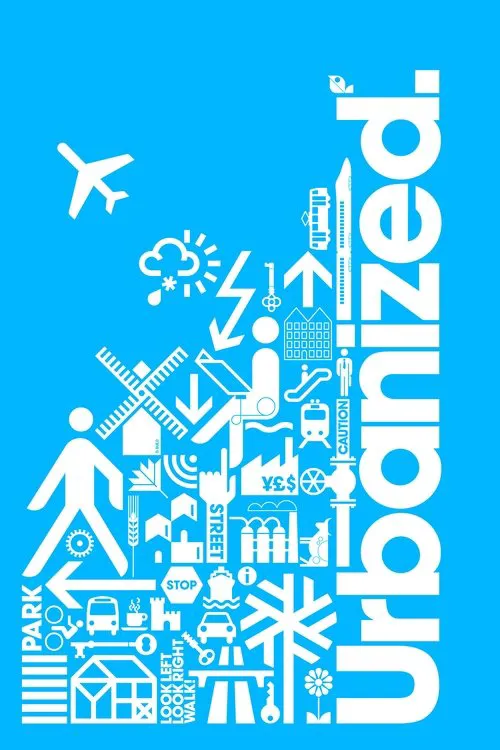Urbanized

Plot
Urbanized, a 2011 documentary film directed by Gary Hustwit, delves into the complexities and intricacies of urban design, examining the underlying principles that shape our cities and the individuals who contribute to their creation. The film traverses the globe, visiting cities in various stages of development, from rapidly transforming Asian hubs to venerable European metropolises. The documentary begins with a visit to the Brazilian city of Curitiba, a paragon of urban planning. Curitiba, founded in the 18th century, has undergone significant transformations over the years. What sets it apart is its innovative approach to urban design. The city's residents and leadership have worked in tandem to create a cohesive, functional, and aesthetically pleasing environment. The streets are wide and well-lit, the parks numerous and immaculately maintained, and public transportation efficient. This synergy between residents and their urban planners has earned Curitiba a reputation as a model of urban sustainability. Gary Hustwit's journey then takes him to Hong Kong, a teeming metropolis of eight million people. This cosmopolitan city is a prime example of a densely populated urban center. However, the rapid growth and high-rise development have taken a toll on the city's infrastructure. The streets are congested, and public housing has given way to pricey skyscrapers and high-density residential projects. Hong Kong's unique landscape presents a fascinating case study in urban evolution and density. The documentary moves on to New York City, an iconic American metropolis. While New York is often regarded as a symbol of urbanization gone amok, Hustwit suggests that it is precisely the city's chaotic energy that drives it forward. New York, with its five boroughs and endless array of neighborhoods, is an organic growth that owes its beauty to an almost anarchic disregard for conventional urban-planning principles. Next, the film takes a trip to Toronto, a city on the rise. Toronto, a metropolis with an eclectic mix of cultures, has invested heavily in innovative urban design. The revitalization of waterfront spaces, the revitalization of abandoned industrial areas, and the establishment of vibrant cultural districts like the revitalized Entertainment District, have all helped transform the city's identity. Toronto's vision for its future is an exercise in reimagining and redefining urban spaces. A key figure in Urbanized is the renowned architect and urban thinker, Moshe Safdie. Safdie, known for his innovative residential concepts, including the iconic Habitat 67 project in Montreal, shares insights into urban living and the delicate balance between human needs and environmental considerations. He explains how successful urban planning must prioritize not just aesthetics but also functionality and sustainability. One of the central themes of Urbanized revolves around density vs. sprawl. Hustwit explores these competing philosophies by visiting various cities around the world, showcasing their responses to issues such as traffic congestion, housing affordability, and resource conservation. As he journeys through cities with varying degrees of density, Hustwit poses a vital question: Is it possible to reconcile density with quality of life? The documentary delves into the role of public housing in addressing housing shortages in high-demand cities. The focus shifts to Dubai, a city-state undergoing rapid industrialization and urbanization. In Dubai, public housing has failed to meet the demands of an influx of new residents, leading to unaffordable, overcrowded, and under-resourced living conditions. This segment underlines the risks of rapid urbanization and neglect of public housing needs. The film also features interviews with visionary city planners and policymakers from around the world. For example, in Mumbai, an informal housing activist, Pratibha Bhandari, shares her experiences navigating the city's informal settlements. Bhandari's grassroots approach highlights the role that community-led initiatives can play in shaping cities and advocating for the rights of the urban poor. Urbanized does not shy away from discussing contentious policy decisions. A conversation with the former Mayor of Seoul, Song Young-Gil, offers a case study on the complexities of implementing a comprehensive public transportation system. Song's tenure saw the establishment of an efficient and affordable subway network that significantly transformed Seoul's urban fabric. However, it also raised important questions about gentrification, urban displacement, and transportation equity. In conclusion, Urbanized is a thoughtful and engaging documentary that invites viewers to consider the complexities of urban design and policy-making. The film's journey through cities in various stages of development highlights both the possibilities and limitations of human-made urban spaces. It reminds us that the design of cities is a multifaceted issue that involves collaboration between residents, planners, policymakers, and stakeholders from diverse backgrounds. Urbanized serves as a poignant reminder that our built environment has a profound impact on our daily lives and that, through the power of urban design, it is possible to create vibrant, inclusive, and resilient cities that benefit all citizens.
Reviews
Recommendations




